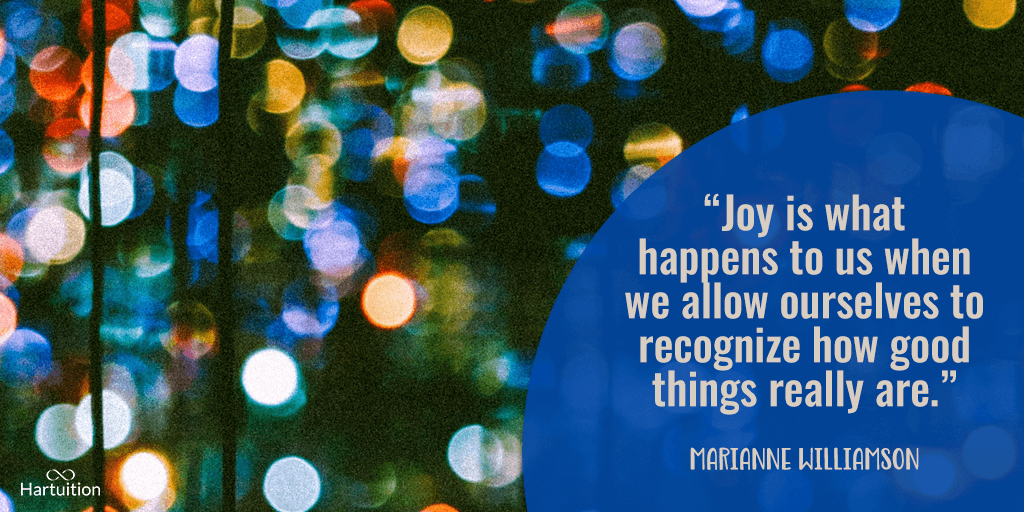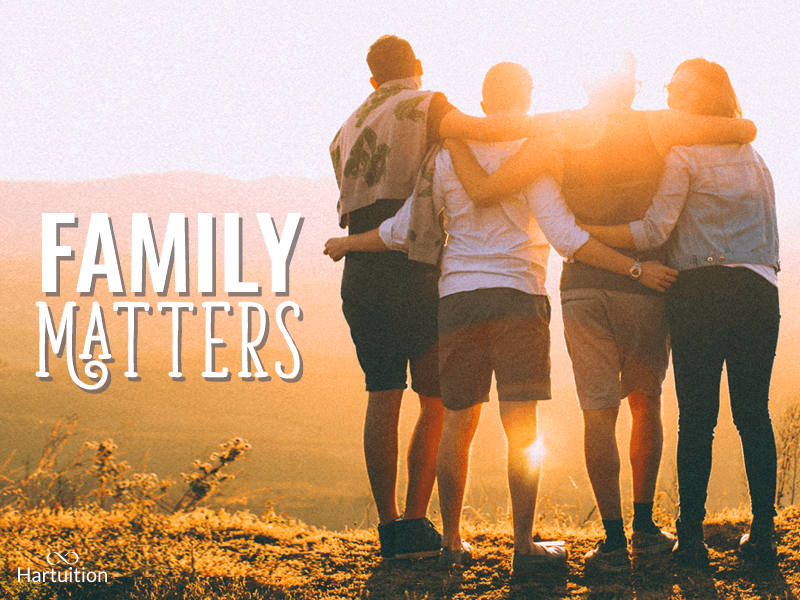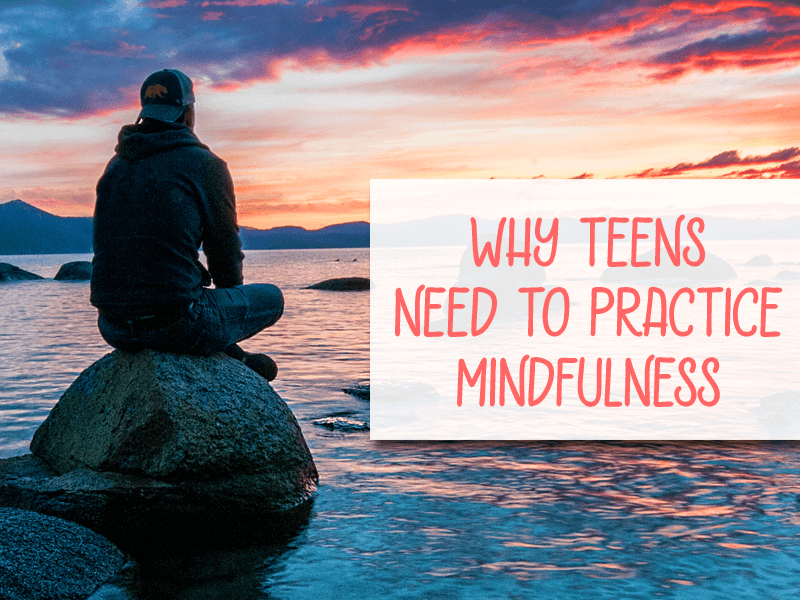Every year I celebrate both Canadian and American Thanksgiving to honour the rituals of my upbringing in the US and my life now with my family in Canada. Now with the Thanksgiving celebrations just behind us and the festivities of Hanukkah and Christmas soon to arrive, I find myself in a reflective mode considering the significant impact that Joy and Gratitude can have on our lives and the reasons why so many of us find it so difficult to experience and embrace these emotions and put them into practice.
Living in Scarcity and Fear
Every day we’re bombarded with outside pressures from people and circumstances that can make us feel like we have to hustle for our worthiness. We can feel like we have to mold and shape our identities and our lives in order to be accepted for who we are, what we do, how we look and how we live our lives.
All the while, we live with the uncertainty and fear that no matter how much we hustle, it’s not enough: life may not deliver the outcomes we so desire. Those thoughts can leave us feeling anxious, fearful and inadequate. A growing sense of scarcity can creep into every corner of our lives and those of our family members.
Lynne Twist, a recognized global visionary, addresses the myth of scarcity in her book The Soul of Money. She writes, “For me, and for many of us, our first waking thought of the day is, ’I didn’t get enough sleep,’ The next one is, ’I don’t have enough time.’ Whether true or not, that thought of not enough occurs to us automatically before we even think to question or examine it. We spend most of the hours and days of our lives hearing, explaining, complaining, and/or worrying about what we don’t have enough of…We don’t have enough exercise. We don’t have enough work. We don’t have enough profits. We don’t have enough power. We don’t have enough wilderness. We don’t have enough weekends. Of course, we don’t have enough money—ever.
We’re not thin enough, we’re not smart enough, we’re not pretty enough or fit enough or educated or successful enough, or rich enough – ever. Before we even sit up in bed, before our feet touch the floor, we’re already inadequate, already behind, already losing, already lacking something. And by the time we go to bed at night, our minds race with a litany of what we didn’t get, or didn’t get done, that day. We go to sleep burdened by those thoughts and wake up to the reverie of lack…What begins as a simple expression of the hurried life, or even the challenged life, grows into the great justification for an unfulfilled life.”
A Legacy of Scarcity
I think I’ve struggled with this sense of scarcity all my life. My perfectionist mindset and the insecurities that stem from that originated in my childhood. As a child, I felt like I had to hustle for worthiness, to be a “good girl”; always trying to perfect, perform, prove and please. My self-worth and happiness were, to a large extent, dependent on outside circumstances and the impressions of others.
It’s alarming to see how fear and the sense of scarcity can be passed down unknowingly from one generation to another. This state existed in my childhood home. My parents learned their struggle from their parents, who learned it from their parents and so on. And, yes, I’m imposing my own struggle on my three kids.
When I assumed the role of “Mother”, I embraced the fact that my children and I would travel on a life path together, sharing learning experiences, stumbling in our efforts at times and hopefully growing from our challenges.
I quickly learned that I was acting as a role model for my kids. They were carefully noting my reactions to the world around me; listening to my words, and observing my actions. Unfortunately, they were also developing the same sense of scarcity, uncertainty, and fear that I had been struggling with since childhood. And that was alarming to me.
The Impact of Scarcity on Teens
Kids are very impressionable. Outside pressures applied by parents and other mentors, peers, social media, advertisements and so much more can have a huge impact on their identities and how they choose to live their lives. They struggle daily with the sense of scarcity, uncertainty and fear as they strive to fulfill social-community expectations.
For instance, my 15 and 18-year-old daughters and their friends have shared with me that they feel powerful, daily pressures to meet unrealistic impressions relating to appearance and body image.
I’ve also had very revealing discussions with my 20-year-old son and other young men – conversations where they’ve revealed that they feel tremendous pressure to appear tough, strong, stoic, powerful, successful, fearless, in-control and able.
All these teens feel a constant and immense struggle to measure up. But they also feel the social-community expectations imposed on them are unattainable.
I quickly realized that in order to help my kids I had to change my own perspective of the world around me and replace my sense of scarcity, uncertainty and fears with sufficiency, courage and faith. My quest for the key to initiate this change led me to the practice of joy and gratitude.
Living with Joy and Gratitude
Joy is the antidote to the sense of scarcity and the fear of chronic unfulfillment. But joy can be experienced only if we practice gratitude. Lynne says that addressing scarcity doesn’t mean searching for abundance but rather choosing a mindset of sufficiency:
“We each have the choice in any setting to step back and let go of the mindset of scarcity. Once we let go of scarcity, we discover the surprising truth of sufficiency. By sufficiency, I don’t mean a quantity of anything. Sufficiency isn’t two steps up from poverty or one step short of abundance. It isn’t a measure of barely enough or more than enough. Sufficiency isn’t an amount at all. It is an experience, a context we generate, a declaration, a knowing that there is enough, and that we are enough. Sufficiency resides inside each of us, and we can call it forward. It is a consciousness, an attention, an intentional choosing of the way we think about our circumstances.”

The Gratitude-Joy Connection
Dr. Brené Brown’s research on the relationship between joy and gratitude revealed three powerful patterns: Without exception, every person interviewed who described living a joyful life or who described themselves as joyful, actively practiced gratitude and attributed their joyfulness to their gratitude practice.
Both joy and gratitude were described as spiritual practices that were bound to a human interconnectedness and a power greater than us.

There is a difference between happiness and joy. Happiness is an emotion that’s connected to circumstances and joy is an emotion derived from within. It’s a spiritual way of engaging with the world that’s connected to practicing gratitude.
Gratitude is a practice – not simply an attitude. It’s an expression of appreciation for all we have received that has benefitted our lives. There are so many things we take for granted that we should value.
Every day before my feet hit the floor and at night before I close my eyes, I state at least ten things I’m grateful for that enrich my life. And when I’m having a particularly stressful day, and I feel a growing sense of scarcity, uncertainty and fear brewing inside me, I stop, acknowledge my vulnerable emotions, and then say, “I am grateful for…”
As soon as I utter my precious list, my whole perspective shifts. Scarcity is replaced with sufficiency. Uncertainty is replaced with faith. Fear is replaced with courage, and the spirit of joy fills my heart!

We need both happiness and joy in our lives. I recognize the importance of creating and acknowledging the experiences that make us happy. But in addition to creating happiness in our lives, I’ve discovered that we need to develop spiritual practices, especially gratitude, that lead to joyfulness.
Joyfulness can be found in the ordinary, everyday moments experienced in life that we often take for granted. It’s so important – during our busy, and at times challenging, days – to stop, shift our perspective and be grateful for those special little moments and the joy they bring. Those moments of joy are what will carry us throughout our lives especially during challenging times.
Start Living Your Best Life!
Grab your free copy of our guide, “10 Principles to Live Your Best Life”, and learn about 10 essential principles you can practice daily to finally achieve everything you have set your sights on.









